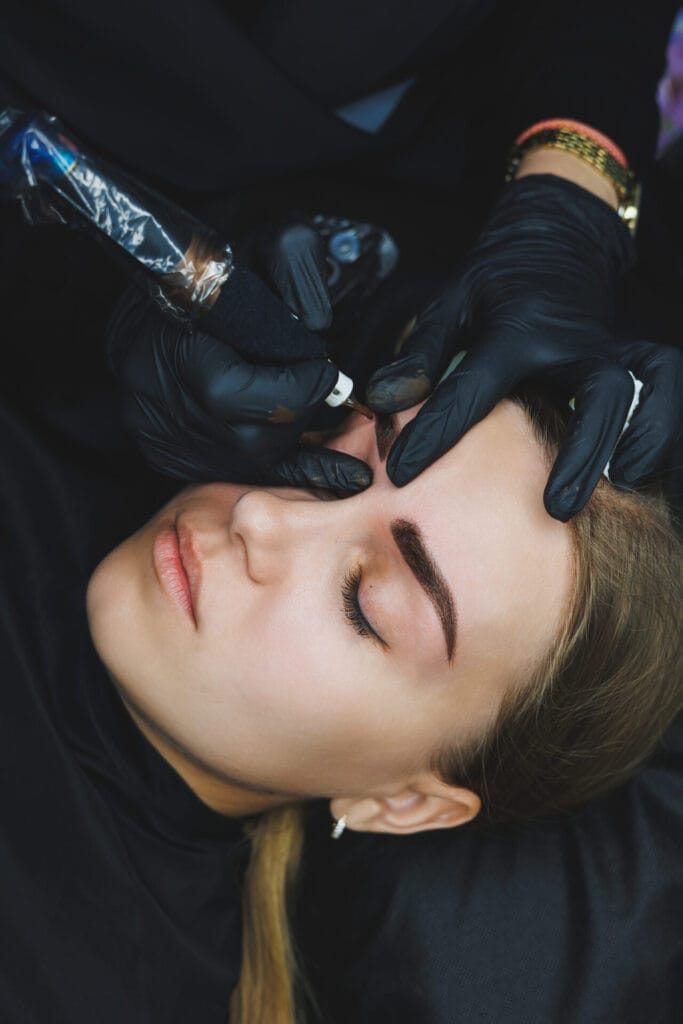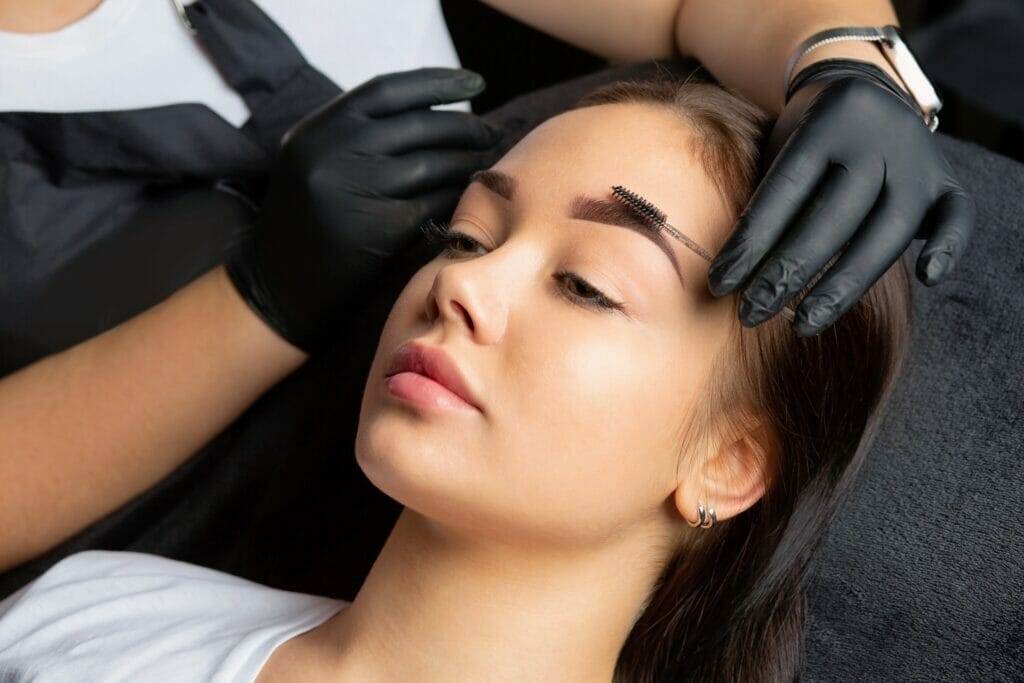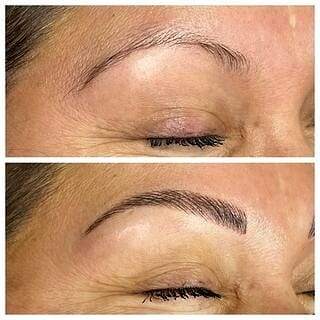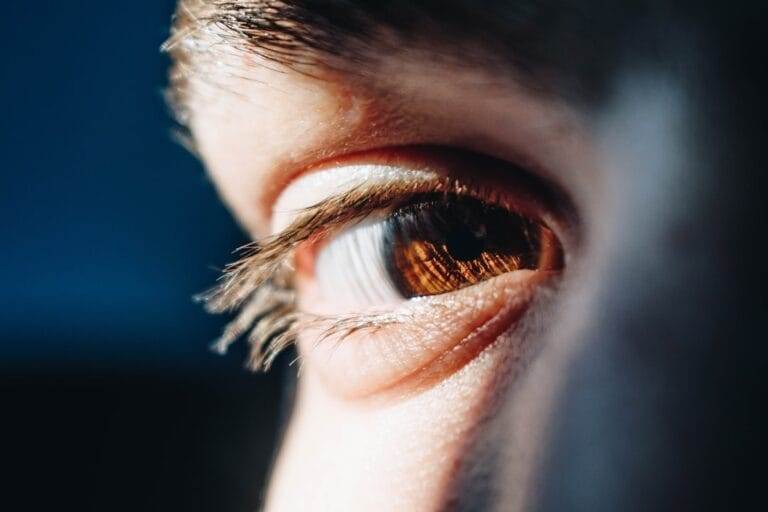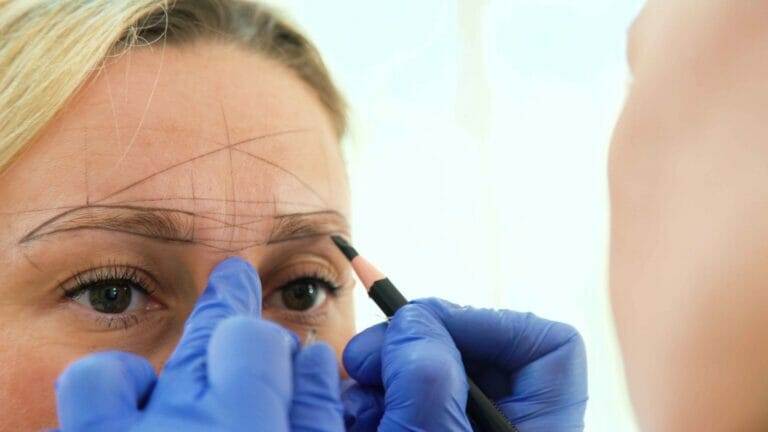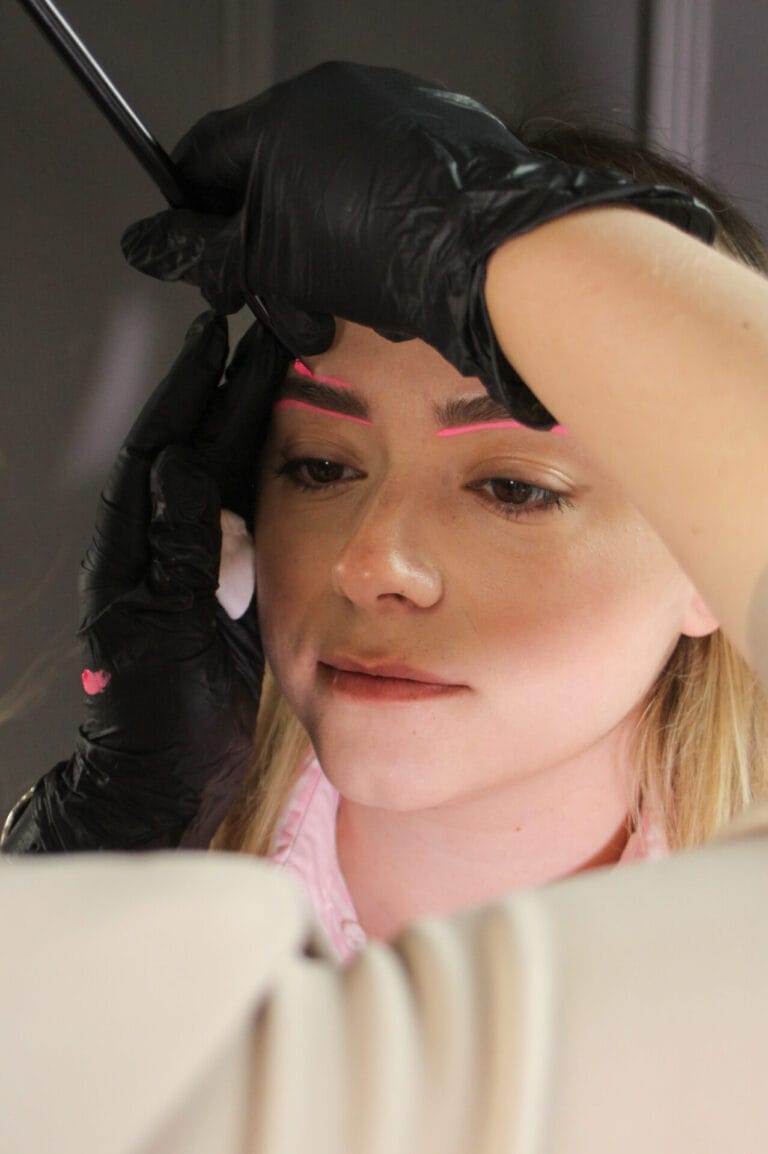Microblading has become increasingly popular in recent years as a way to achieve perfectly shaped and defined eyebrows. This semi-permanent makeup technique involves using a small handheld tool to create hair-like strokes on the skin, giving the appearance of natural brows. It is important to have a good understanding of microblading before deciding to undergo the procedure, as it requires careful consideration and research. In this article, we will explore what microblading is, its benefits, how to choose the right artist, what to expect during the process, aftercare instructions, common mistakes to avoid, touch-ups and maintenance, and how it compares to other brow techniques.
What is Microblading?
Microblading is a form of cosmetic tattooing that involves manually depositing pigment into the upper layers of the skin using a small handheld tool with tiny needles. The result is natural-looking, semi-permanent eyebrows that can last anywhere from one to three years. Unlike traditional eyebrow tattooing, which uses a machine and creates a solid block of color, microblading creates individual hair-like strokes that mimic the appearance of real eyebrows.
One of the key differences between microblading and other brow techniques is the level of precision and control that can be achieved. With microblading, the artist has complete control over the shape, thickness, and placement of each individual stroke, allowing for a customized and natural-looking result. This technique is particularly beneficial for those with sparse or uneven brows who want to enhance their natural beauty.
The Benefits of Microblading
One of the main benefits of microblading is that it saves time and money in the long run. With perfectly shaped and defined brows, there is no need to spend time every morning filling them in with makeup. This can be especially beneficial for those with busy lifestyles or those who struggle with applying makeup evenly.
Another advantage of microblading is that it provides natural-looking results. The individual hair-like strokes created during the procedure blend seamlessly with the existing brow hairs, giving the appearance of fuller and more defined brows. This can help to enhance facial features and create a more balanced and symmetrical look.
Microblading can also boost confidence and self-esteem. Many people feel self-conscious about their eyebrows, whether they are too thin, too sparse, or have uneven growth. By undergoing microblading, individuals can achieve their desired brow shape and color, which can greatly improve their overall appearance and confidence.
Preparing for Your Microblading Appointment
Before your microblading appointment, there are certain activities and products that should be avoided to ensure the best possible outcome. Avoid plucking or waxing your eyebrows for at least two weeks prior to your appointment, as this can affect the shape and placement of the microbladed strokes.
It is also important to discuss any medical conditions or medications you are taking with your microblading artist. Certain conditions and medications can affect the healing process and may require additional precautions or adjustments to the procedure.
On the day of your appointment, arrive with clean skin and no makeup on your eyebrows. This will allow the artist to properly assess your natural brow shape and color and create a customized plan for your microblading procedure.
The Microblading Process: What to Expect
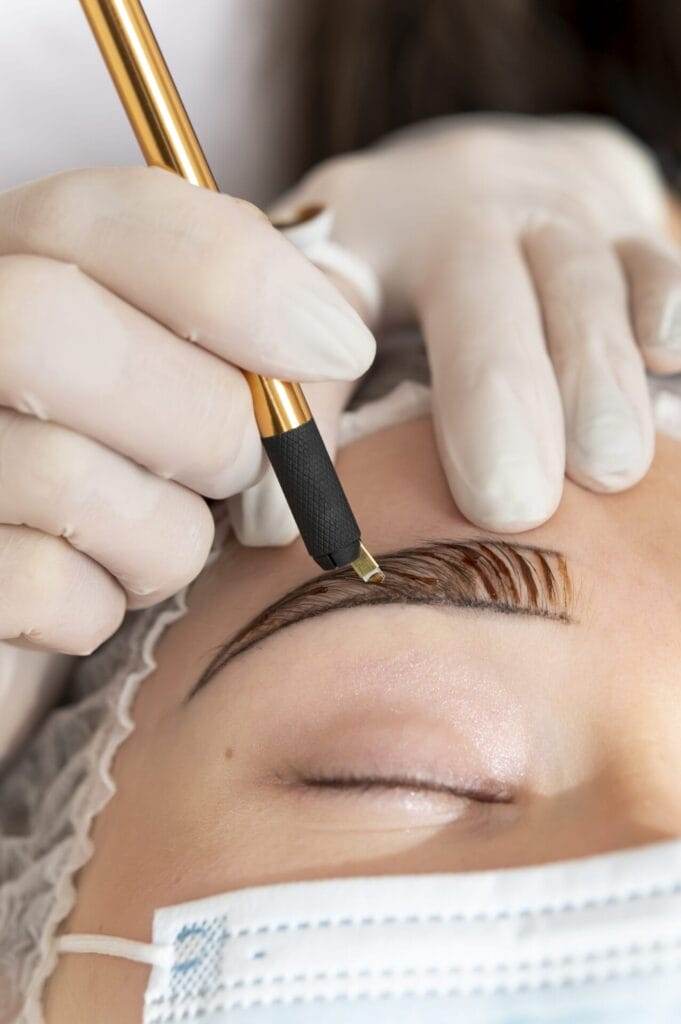
The microblading process typically involves several steps to ensure the best possible outcome. First, the artist will consult with you to determine your desired brow shape and color. They will then use a pencil to outline the shape of your new brows, taking into consideration your natural brow shape and facial features.
Once the shape is agreed upon, the artist will apply a numbing cream to minimize any discomfort during the procedure. The microblading tool, which consists of a small handheld tool with tiny needles, is then used to create hair-like strokes in the upper layers of the skin. The artist will carefully follow the outline created during the consultation, ensuring that each stroke is placed in the correct direction and angle.
The entire microblading process can take anywhere from one to two hours, depending on the complexity of the desired brow shape and color. During this time, it is important to remain still and relaxed. Some discomfort or slight pain may be experienced during the procedure, but this can be minimized with the use of numbing cream.
Aftercare for Your Microbladed Brows
Proper aftercare is crucial for ensuring optimal healing and long-lasting results. Immediately after the procedure, your brows may appear darker and more intense than expected. This is normal and will fade over time as the pigment settles into the skin.
For the first few days following your microblading appointment, it is important to keep your brows clean and moisturized. Gently cleanse them with a mild cleanser or water and pat them dry with a clean towel. Apply a thin layer of the provided aftercare ointment to keep the brows moisturized and protected.
During the healing process, it is important to avoid certain activities and products that can affect the outcome of your microbladed brows. Avoid swimming, saunas, and excessive sweating for at least two weeks, as this can cause the pigment to fade or become dislodged. Avoid applying makeup or other skincare products directly on the brows until they are fully healed.
The healing process for microbladed brows typically takes around four to six weeks. During this time, it is normal for the brows to go through various stages of healing, including scabbing and flaking. It is important to resist the urge to pick or scratch at the scabs, as this can affect the final result.
Common Microblading Mistakes to Avoid
There are several common mistakes that individuals make when it comes to microblading. One of the most common mistakes is over-plucking or waxing the eyebrows before the appointment. It is important to allow your natural brow hairs to grow out so that the artist has enough hair to work with and create a natural-looking result.
Another common mistake is not following the aftercare instructions provided by your microblading artist. Proper aftercare is crucial for ensuring optimal healing and long-lasting results. Failure to follow the aftercare instructions can result in poor pigment retention and an increased risk of infection.
Choosing an inexperienced or unqualified microblading artist is another common mistake that should be avoided. It is important to do thorough research and choose an artist who has a proven track record of producing natural-looking results. Look for artists who have certifications or accreditations and who have a portfolio of before and after photos showcasing their work.
Touch-Ups and Maintenance for Your Microbladed Brows
Microbladed brows typically require touch-ups every one to two years to maintain their shape and color. The frequency of touch-ups will depend on factors such as skin type, lifestyle, and exposure to the sun. During a touch-up appointment, the artist will assess the condition of your brows and make any necessary adjustments or enhancements.
To maintain the longevity of your microbladed brows, it is important to follow a few simple tips. Avoid excessive sun exposure, as this can cause the pigment to fade. Use a sunscreen specifically formulated for the face and apply it to your brows when spending time outdoors. Avoid using exfoliating products or treatments directly on the brows, as this can cause the pigment to fade more quickly.
The cost of touch-ups and maintenance will vary depending on the artist and location. It is important to factor in these costs when considering microblading as a long-term solution for your brows.
Microblading vs. Other Brow Techniques: Which is Right for You?
Microblading is just one of many brow techniques available today. It is important to consider your individual needs and preferences when choosing a brow technique. Microblading offers a natural-looking result that can last anywhere from one to three years, making it a popular choice for those who want semi-permanent results.
Other brow techniques, such as tattooing and threading, may also be suitable depending on your desired outcome. Tattooing creates a more permanent result and is often used for those who want a more dramatic or defined brow shape. Threading is a technique that involves using a twisted thread to remove unwanted hair from the brow area. This technique is often used for those who want precise shaping and hair removal.
When choosing a brow technique, it is important to consider factors such as cost, maintenance, and personal preference. Consult with a professional to determine which technique is best suited to your individual needs.
Frequently Asked Questions About Microblading
1. Is microblading painful?
The level of pain experienced during microblading can vary from person to person. Some individuals may experience slight discomfort or a scratching sensation, while others may find it more painful. Numbing cream is typically applied before the procedure to minimize any discomfort.
2. How long does microblading take?
The microblading process typically takes one to two hours, depending on the complexity of the desired brow shape and color.
3. How long does microblading last?
Microbladed brows can last anywhere from one to three years, depending on factors such as skin type, lifestyle, and exposure to the sun.
4. Can I wear makeup after microblading?
It is important to avoid applying makeup directly on the brows until they are fully healed, which typically takes around four to six weeks.

Achieving Your Dream Brows with Microblading: Tips and Tricks
When communicating with your microblading artist about your desired brow shape and color, it is important to be clear and specific. Bring photos or examples of brows that you like to help convey your preferences. Be open to the artist’s suggestions and expertise, as they will have a good understanding of what will work best for your individual features.
When preparing for touch-ups and maintenance appointments, it is important to follow the aftercare instructions provided by your artist. This includes avoiding certain activities and products that can affect the healing process. It is also important to communicate any changes or concerns you may have with your artist during these appointments.
In conclusion, microblading is a popular and effective technique for achieving perfectly shaped and defined eyebrows. It offers a range of benefits, including time and money savings, natural-looking results, and increased confidence. When considering microblading, it is important to choose the right artist, prepare properly for your appointment, follow the aftercare instructions, and avoid common mistakes. With proper care and maintenance, microbladed brows can last for years, providing you with the dream brows you’ve always wanted.

